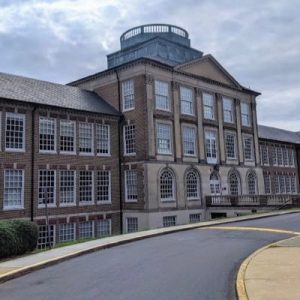Human activities leave spatial legacies
Even seemingly benign activities can leave lasting impacts on the built environment
November 5, 2020
Growing up, my family and I would frequently go to Kansas City’s Union Station on the weekend to grab breakfast, lunch or the famous combo: brunch. The impressive building was constructed in 1914 in the Beaux Arts style of architecture and is an unmissable part of downtown.
Today, Union Station is home to many traveling, educational exhibits which vary greatly in subject matter. Recently they had an exhibit on Ghengis Khan and sometime before that I believe they housed one on the Titanic. Along with the various traveling presentations, there is a permanent attraction known as Science City, which features many interactive, scientifically based activities. It is an extremely popular destination for both school field trips and weekend family fun.
I spent a lot of my childhood visiting Union Station with my parents and grandparents to enjoy those features. But, one thing that always stood out to me was something that my father would consistently point out to us all in the grand, high ceilinged entrance hall you pass through on the way inside. Along two spots on the perimeter of the space, there are these unusual grooved divots about the size of a shoebox on the floor. And, near the public restrooms, there are two pairs of mango shaped indentations in the stone as well.
I remember the first time my dad asked me, “Now, what do you think these are?” I had no idea. I couldn’t think of any structural reason the architects would have placed such obscurely unimportant marks on the surface of an otherwise completely flat surface. The floor seemed as though it might have just contained some sort of previously unattended to deformity which did nothing to ultimately impede its function. They just seemed like some sort of accident that slipped through the construction process.
While it is important to think about how we are going to … change our surroundings, it is also critical that we work to think about the converse.”
Yet, according to my dad, these unusual anomalies are the result of aspects which are no longer present in Union Station: pay phones and shoe shine booths. Although the public telephones had been stripped and the eloquent shoe shine booths removed some time ago, there is still an observable impact of those old features on the floor itself. Apparently, these worn spots can be seen today after many years’ worth of shoes stepping up and fidgeting while on the phone with loved ones and the knees of shining attendants shifting from side to side on the ground as they made chit chat, getting leather loafers all cleaned up. If something is done enough, even subtly, it can leave a remarkable impact.
Upon searching Google, one can see that the peak annual traffic through the train station was in 1945 at the end of World War II. A majority of the wear that my dad points out likely came from that period and the bustling years that followed. If you look up vintage images from those days, it is shocking to see the long stretching benches filled to capacity and the masses of people knocking shoulders as they sought out those whom they wished to find after their long journeys.
Imagine the excitement that filled those halls and hearts while soldiers and wives were reunited.
As opposed to last week’s examples of mankind’s deliberate marking of their environments, the wearing on the floor of Union Station is an example of humanity’s tendency to unconsciously, even accidentally, impact the spaces in which they live. There certainly are many moments in which we can and should be mindful of our direct, conscious efforts to change or impact our world. However, people also must think about our often unconsidered habits, tendencies and or patterns which not only subconsciously define us but also leave a measurable impact on the physical world.
While it is important to think about how we are going to try and deliberately mark or change our surroundings, it is also critical that we work to think about the converse.
What sort of “divots in the floor” could you be unknowingly contributing to which future generations will observe?











